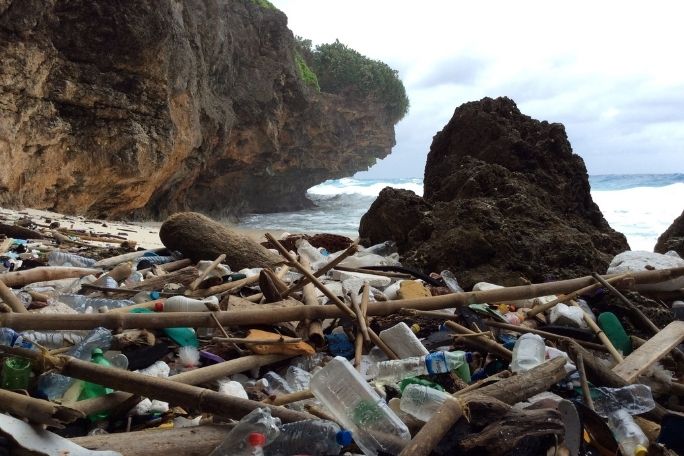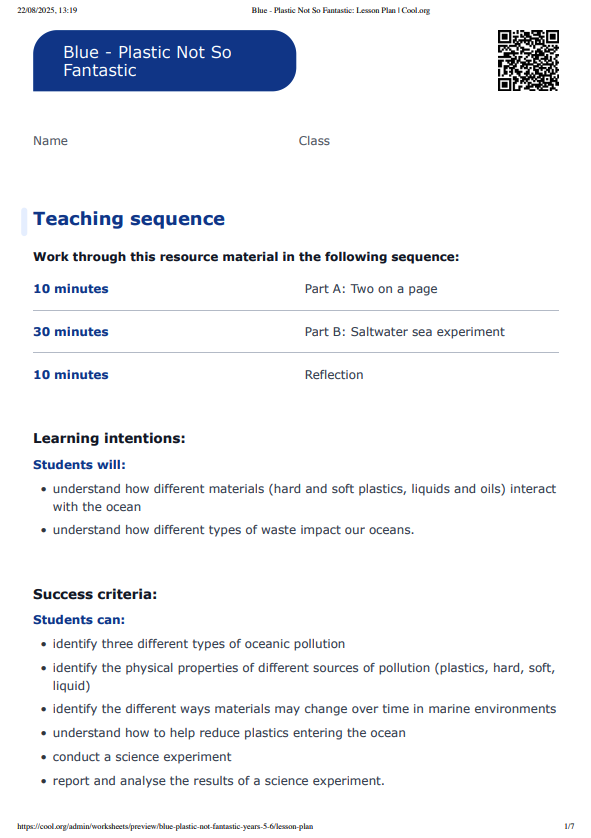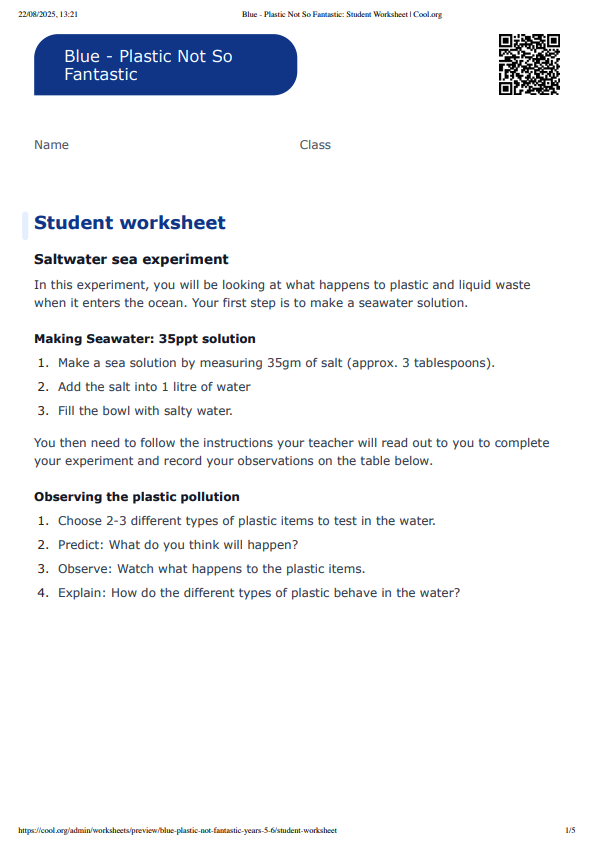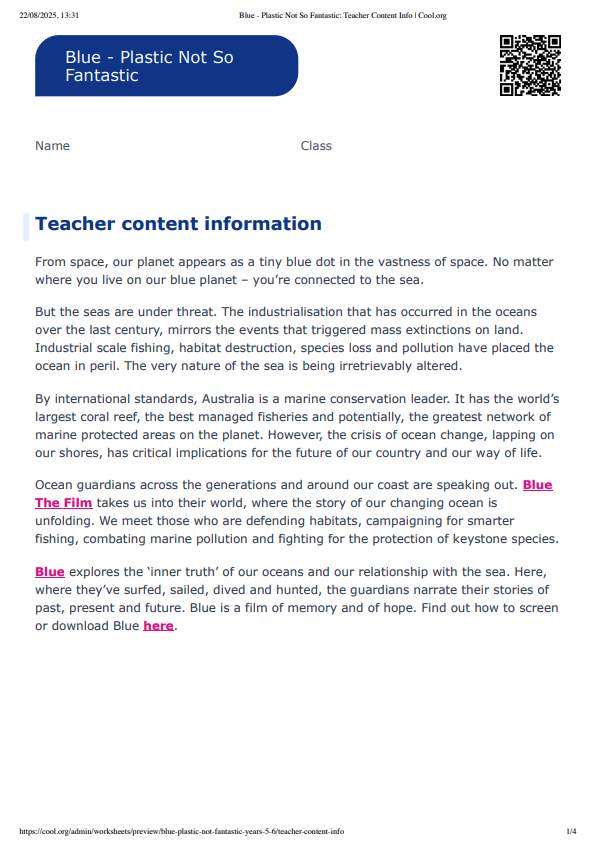Lesson summary
This lesson incorporates clips from Blue The Film as learning inspiration. Students explore the different types of plastics that are found in our oceans. The begin by participating in a prior knowledge quick draw activity to tune them into the issue of plastic waste. They then conduct an experiment to observe how plastic and liquid sources of pollution interact with our oceans. Following an analysis of their results, students return to their quick draw activity to record how their thinking has changed over the course of this lesson.
Learning intentions:
Students will...
- understand how different materials (hard and soft plastics, liquids and oils) interact with the ocean
- understand how different types of waste impact our oceans.
Success criteria:
Students can...
- identify three different types of oceanic pollution
- identify the physical properties of different sources of pollution (plastics, hard, soft, liquid)
- report and analyse the results of a science experiment.
Lesson guides and printables
Curriculum links
Select your curriculum from the options below.
Lesson details
Skills
This lesson is designed to build students’ competencies in the following skills:
- communication
- creativity
- critical thinking
Curriculum Mapping
Australian Curriculum content descriptions:
Year 5 Science:
- Solids, liquids and gases have different observable properties and behave in different ways (ACSSU077)
- Decide variables to be changed and measured in fair tests, and observe measure and record data with accuracy using digital technologies as appropriate (ACSIS087)
- Compare data with predictions and use as evidence in developing explanations (ACSIS218)
- Reflect on and suggest improvements to scientific investigations (ACSIS091)
Year 6 Science:
- Changes to materials can be reversible or irreversible (ACSSU095)
- Identify, plan and apply the elements of scientific investigations to answer questions and solve problems using equipment and materials safely and identifying potential risks (ACSIS103)
- Compare data with predictions and use as evidence in developing explanations (ACSIS221)
- Reflect on and suggest improvements to scientific investigations (ACSIS108)
Syllabus outcomes: ST3-12MW, ST3-4WS.
General capabilities: Critical and Creative Thinking.
Cross-curriculum priority: Sustainability
Relevant parts of Year 5 Science achievement standards: Students classify substances according to their observable properties and behaviours. Students use equipment in ways that are safe and improve the accuracy of their observations. They compare patterns in their data with predictions when suggesting explanations.
Relevant parts of Year 6 Science achievement standards: Students compare and classify different types of observable changes to materials. They follow procedures to develop investigable questions and design investigations into simple cause-and-effect relationships, and identify where improvements to their methods or research could improve the data.
Unit of work: Blue The Film: Inquiry – Years 5 & 6.
Time required: 60 mins.
Level of teacher scaffolding: High – lead students in experiment and discussions.
UN Sustainable Development Goals
- Target 14.1: By 2025, prevent and significantly reduce marine pollution of all kinds, in particular from land-based activities, including marine debris and nutrient pollution.
Resources Required
- Student Worksheet – one copy per student
- Device capable of presenting a website to the class
- A3 piece of paper and two coloured pencils for each pair of students
- Experiment materials for each group: hard plastic (lids, caps,bottles), soft plastic (bags, food packets, ziplock bags), tablespoon, cooking salt, water, food dye, cooking oil, medium to large bowl, 1 litre beaker or measuring cups.
Additional Info
Blue is a feature documentary film charting the drastic decline in the health of our oceans. With more than half of all marine life lost and the expansion of industrialisation of the seas, the film sets out the challenges we are facing and the opportunities for positive change. Blue changes the way we think about our liquid world and inspires the audience to action. Find out how to screen or download the film here. Along with the film is an ambitious global campaign to create advocacy and behaviour change through the #oceanguardian movement. To become an ocean guardian, see the website.
Related Professional Learning
How To Teach Sustainability With Hope
Quick summary: This course is for both primary and secondary teachers of all subjects, but especially for English, Science, Humanities and Geography teachers who are covering climate change and the cross-curriculum priority of sustainability.




Welcome back!
Don't have an account yet?
Log in with:
Create your free Cool.org account.
Many of our resources are free, with an option to upgrade to Cool+ for premium content.
Already have an account?
Sign up with:
By signing up you accept Cool.org's Terms and Conditions(Opens in new tab) and Privacy Policy(Opens in new tab).